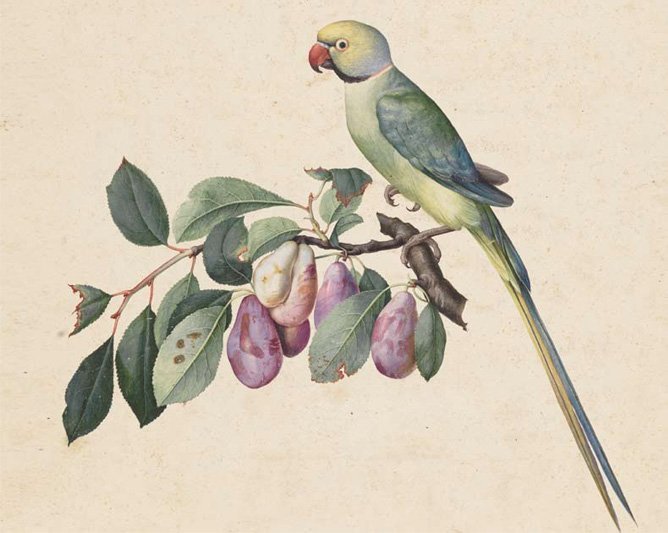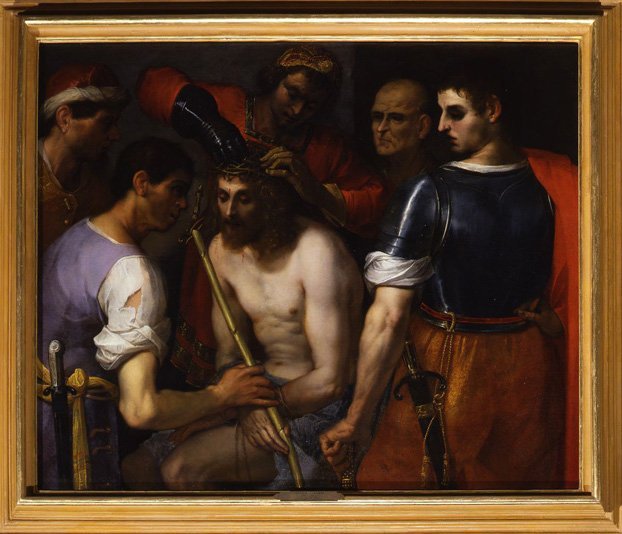Jacopo Ligozzi, cataloging nature at the court of Francesco I
- Jacopo Ligozzi (Verona 1547 – Frenze 1627), “Jerboas of the desert”, polychrome tempera on paper, Florence, Uffizi, Cabinet of Drawings and Prints.
- Jacopo Ligozzi (Verona 1547 – Frenze 1627), “Branch of plum with collared parakeet”, polychrome tempera on paper, Florence, Uffizi, Cabinet of Drawings and Prints
- Jacopo Ligozzi (Verona 1547 – Frenze 1627), “Agave americana from a series of paintings done for Francesco I de ‘Medici”
- Jacopo Ligozzi (Verona 1547 – Frenze 1627), “The Pope of the Turks”, black pencil, tempera polychrome, gold highlights on paper, Florence, Uffizi, Cabinet of Drawings and Prints
- Jacopo Ligozzi (Verona 1547 – Frenze 1627), “Portrait of Virginia de’ Medici”, Florence, Uffizi Gallery
- Jacopo Ligozzi (Verona 1547 – Frenze 1627), “Crowning with Thorns”, oil on canvas, Florence, Galleria Palatina
- Jacopo Ligozzi (Verona 1547 – Frenze 1627), Cloister of Ognissanti, St. Francis Stories
- Jacopo Ligozzi (Verona 1547 – Frenze 1627), “Agony in the Garden”, oil on canvas, Florence, Galleria Palatina
From 27 May (until 28 September), the Galleria Palatina in Florence will host the first major exhibition dedicated to Jacopo Ligozzi, a painter who lived in the sixteenth and seventeenth centuries and had an extremely varied production. A large part of his body of work is dedicated to the close relationship between art and science, Conceptual Fine Art is especially interesting.
Ligozzi was born in 1547 in Verona, worked as a painter in the Veneto region, and moved to Florence, where, from 1577 he was employed at the grand-ducal court of Francesco I. This step to the Medici’s court, was the seminal event of his life. On the death of Giorgio Vasari, he became court’s official painter and was elected consul of the Accademia delle Arti e del Disegno, covering this role until his death in 1627.
The artistic production by Jacopo Ligozzi was multi-faceted and greatly versatile: he was a painter of history (for example, the large paintings on the blackboard in the ceiling of the Salone dei Cinquecento in Palazzo Vecchio); he was designer for clothes and for embroidery for fabrics, and manufactured goods in precious stones; he was a painter of religious subjects, as seen from the large altarpieces executed for Florentine churches – from the SS. Annunziata, Santa Maria Novella, Ognissanti and Santa Croce, and other churches in Tuscany. Ligozzi was also very fascinated by the theme of moral allegories, especially in relation with the subject of ‘Vanitas’, which he faced in many occasions, and which constituted one of the major points of interest of his production.
The scientific illustrations was indeed the main activity of the painter, and it is no coincidence that his interest in the representation of nature was appreciated only by Francesco I de ‘Medici, famous himself for his passion in science and in alchemy – the Granduca is represented in the painting “the study of the alchemist “by Giovanni Stradano, in the role of a character performing an experiment with test tubes and stills.
The botanical and zoological tables painted by Ligozzi are now kept, for the most part, in the Cabinet of Drawings and Prints of the Uffizi: 78 tempera paintings of plants, and 65 of animals; some others are preserved in the Biblioteca Universitaria di Bologna. They are often life-size, and have been called “exceptional for the precision and finesse of the design, delicacy, brilliance and harmony of color, balance and clarity of composition.”
The presence of some unfinished boards also allowed to investigate on his modus operandi: from the beginning the artist loomed slightly edges with black pencil, then intervened with a first draft of which was patiently veiled color and finished with thin tempera paint brushes – which allowed the return of the most sought after color variations – and finally fixed them with a glossy paint, maybe egg white.
The naturalistic illustrations were made by the artist essentially in the first ten years of his stay in Florence, until 1587, which not coincidentally is the year of the death of Francesco I, namely the undisputed director of that vast encyclopedic task of cataloguing the nature, of which Jacopo Ligozzi was the main interpreter in painting.
September 22, 2014








